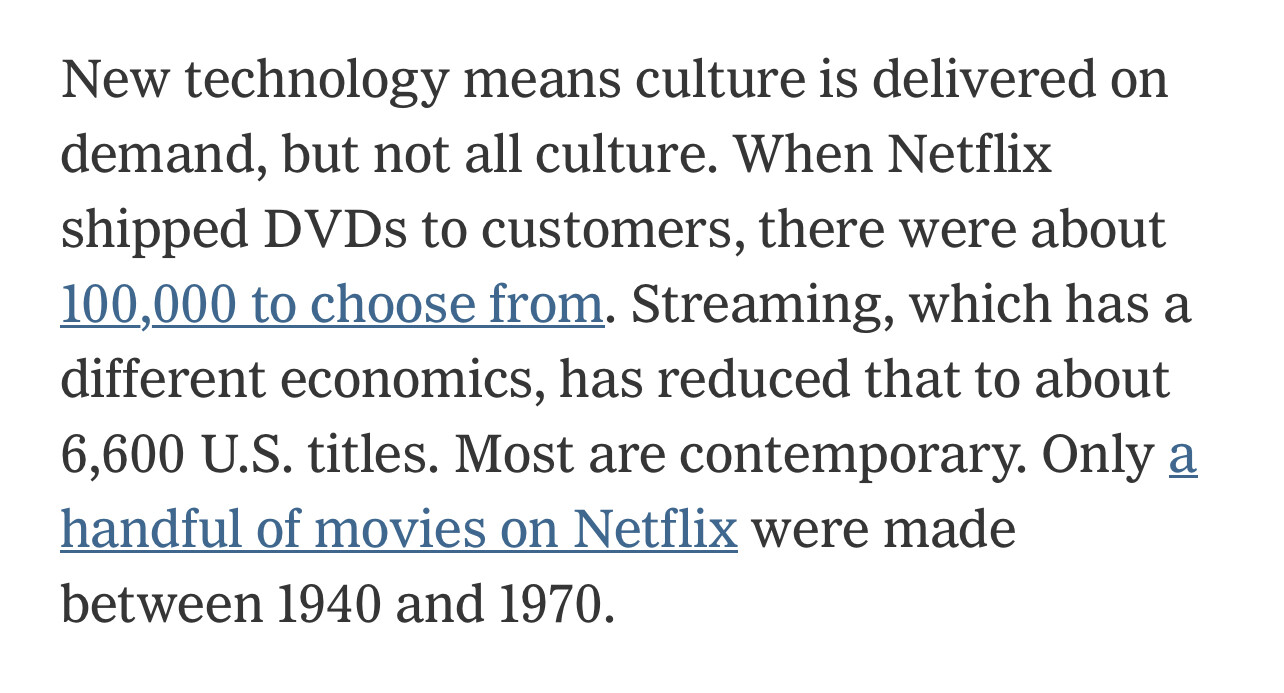law trumps physics, sometimes. storing and streaming digital works is so much cheaper in real resource terms than maintaining a library of DVDs you physically ship. and yet. https://www.nytimes.com/2023/08/13/business/media/internet-archive-emergency-lending-library.html?unlocked_article_code=SHhC1zCbybhNFFee1y2yE7uXqng9k_IfnWuZkvknItNyMGa8BjDb1bXtRT0vokzjJaZZ4n4b5tyDwKHX_OKblh5-fgx1H7U_y940V0RgncogyolvY7rx8-IY95ySMtAVyUXnSCINtoXVM-oHLsNncfS2VAmgWe5FGNQlJzFNLs7K-66gISBTvh364RoH3jmjvdf704Eoq-qNuSQEBshAMCUANLHBkCI9sJKVgDaiOsJwhoCfC2QXb5Kj7uwSQN78xBz6_V4R-HISPaCICnwsD-nwEhWDA0cxHLsC6PWPeRa_hhNetXGpM0wml5p0AqvzzAZ8idCCbUc-qcV9IuZ04aw92MN5ogprGrzF4bSZcBdsGFka7hzM13MxzQ&smid=url-share via @carlmalamud@official.resource.org
 Text: New technology means culture is delivered on demand, but not all culture. When Netflix shipped DVDs to customers, there were about 100,000 to choose from. Streaming, which has a different economics, has reduced that to about 6,600 U.S. titles. Most are contemporary. Only a handful of movies on Netflix were made between 1940 and 1970.
Text: New technology means culture is delivered on demand, but not all culture. When Netflix shipped DVDs to customers, there were about 100,000 to choose from. Streaming, which has a different economics, has reduced that to about 6,600 U.S. titles. Most are contemporary. Only a handful of movies on Netflix were made between 1940 and 1970.